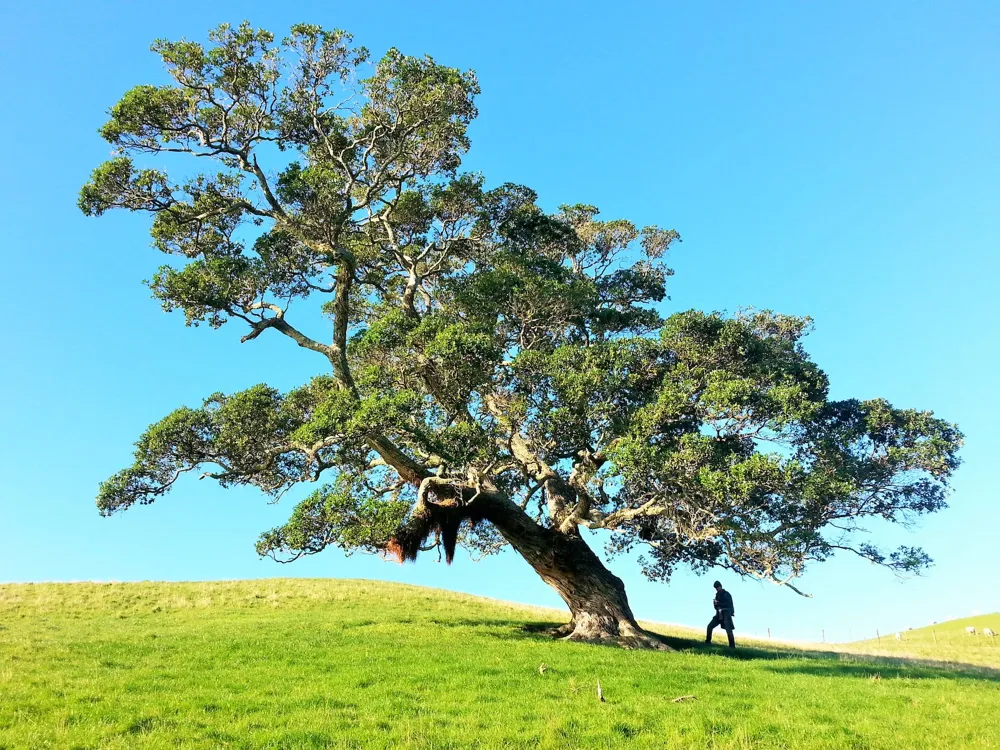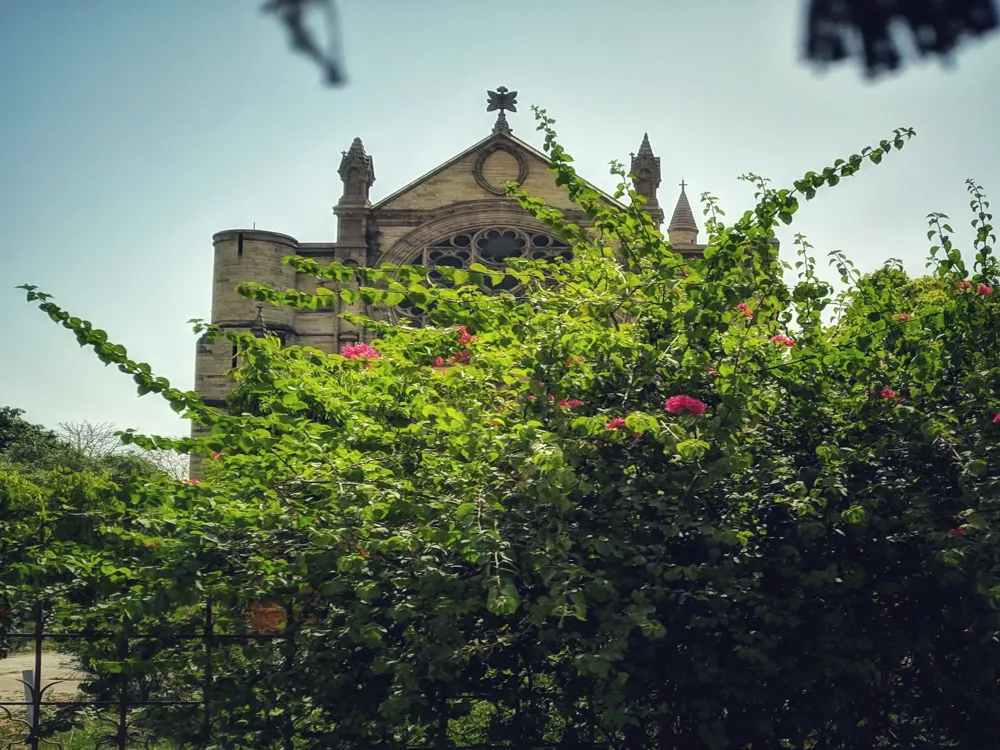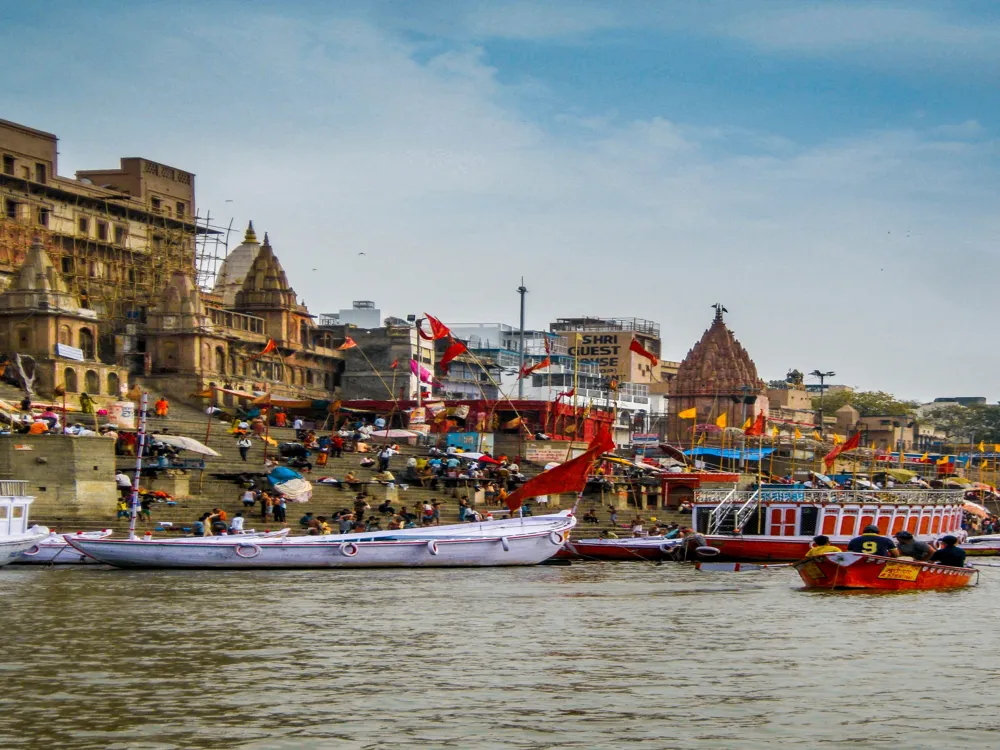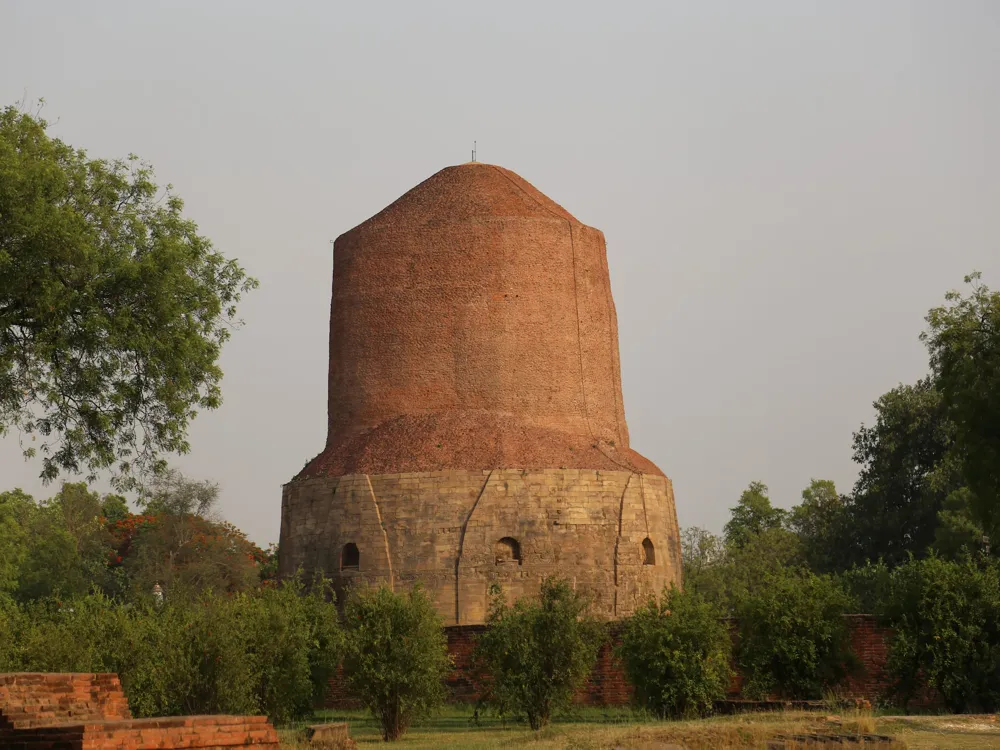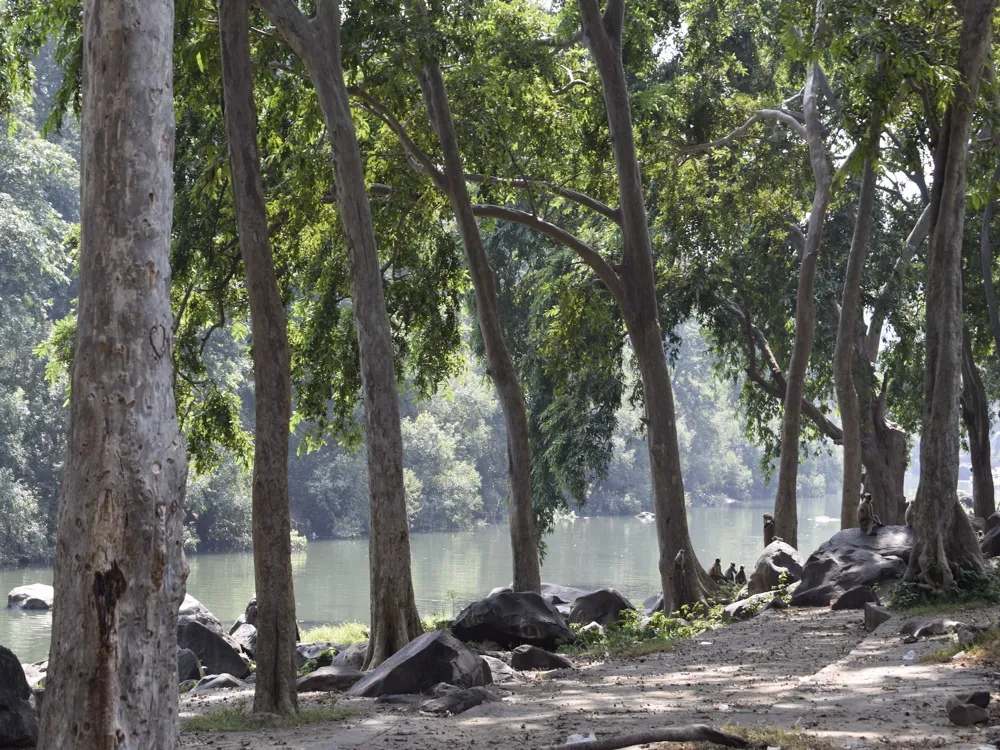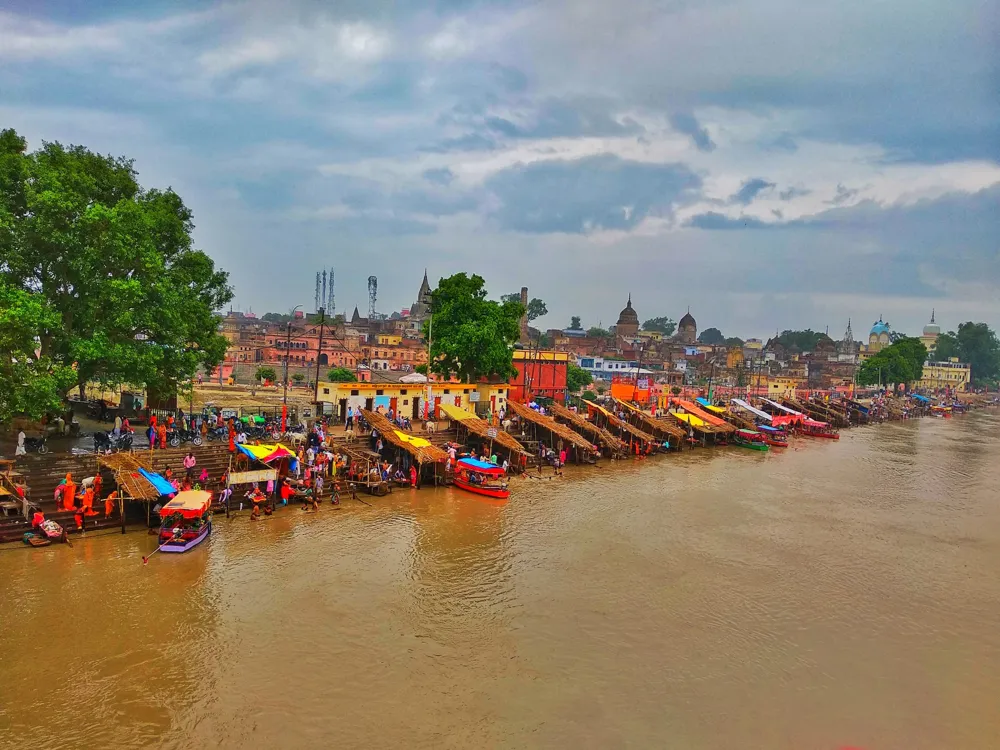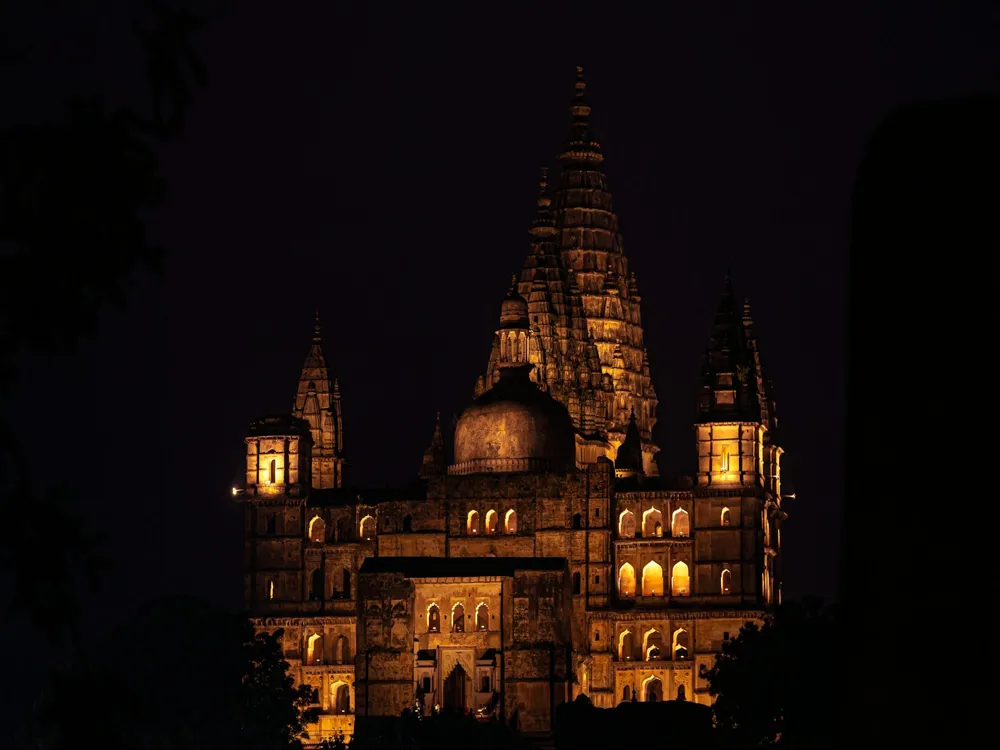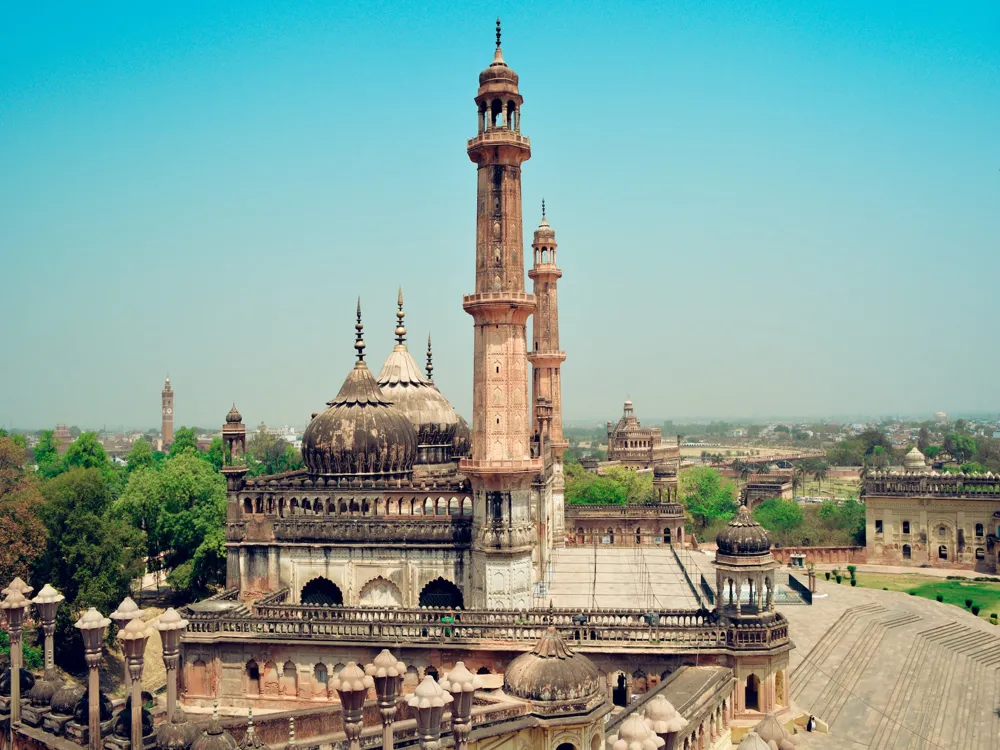Nestled in the historic city of Allahabad, Uttar Pradesh, the Akshayavat Tree stands as a timeless testament to nature's majesty and mythological significance. Revered in Hindu mythology, this ancient fig tree is not just a botanical marvel but also a pivotal symbol of cultural and spiritual beliefs. The Akshayavat, or the indestructible banyan, is believed to have existed since the time of the Dvapara Yuga, making it an integral part of the city's spiritual landscape. The tree's resilience and enduring presence through centuries symbolize eternal life, drawing pilgrims and tourists alike to witness its grandeur. The Akshayavat Tree, while being a natural formation, exhibits an architectural grandeur that is unique and awe-inspiring. Its vast canopy, intricate root system, and sturdy trunk stand as natural architectural feats. The tree's roots delve deep into the earth, symbolizing grounding and stability, while its branches stretch out wide, signifying reach and protection. This magnificent tree has witnessed the rise and fall of empires, the changing courses of rivers, and the ebb and flow of countless pilgrims. Its location within the Patalpuri Temple, inside the Allahabad Fort, adds to its mystical and historical significance. The fort itself, a creation of the Mughal Emperor Akbar, stands as a testament to the architectural ingenuity of the Mughal era, with its strategic design and robust construction. The ideal time to visit the Akshayavat Tree in Allahabad is during the cooler months of October to March. The weather is pleasant, making it comfortable to explore and appreciate the tree's beauty and the surrounding historical structures. Visitors are reminded to maintain the sanctity of the Akshayavat Tree and the Patalpuri Temple. It is a place of religious importance, so appropriate attire and behavior are expected to show respect to the local culture and beliefs. Photography enthusiasts should aim to capture the Akshayavat Tree during the golden hours for the best natural lighting. However, be mindful of the rules regarding photography inside the temple premises and seek permission if required. Given the extensive area of the fort and temple, visitors should carry water to stay hydrated. Comfortable walking shoes are recommended for exploring the area with ease. Allahabad, now known as Prayagraj, is well-connected by road, rail, and air. The nearest airport is the Allahabad from where one can hire taxis or take buses to reach the city center. Allahabad Junction is the major railway station, connecting the city to various parts of India. For those traveling by road, Allahabad is accessible via national and state highways. Once in the city, local transportation options like auto-rickshaws and taxis can be used to reach the Akshayavat Tree, located inside the Allahabad Fort. Read More: Akshayavat Tree Allahabad: A Timeless Natural Wonder
Architecture of Akshayavat Tree Allahabad
Tips When Visiting Akshayavat Tree Allahabad
Best Time to Visit
Respecting the Sanctity
Photography Tips
Staying Hydrated and Prepared
How To Reach Akshayavat Tree Allahabad
Akshayavat Tree Allahabad
Allahabad
Uttar Pradesh
NaN onwards
View allahabad Packages
Allahabad Travel Packages
View All Packages For Allahabad
Top Hotel Collections for Allahabad

Private Pool

Luxury Hotels

5-Star Hotels

Pet Friendly
Top Hotels Near Allahabad
Other Top Ranking Places In Allahabad
View All Places To Visit In allahabad
Faq on Allahabad
What is the Akshayavat Tree, and where is it located?
The Akshayavat Tree is a sacred fig tree located in Prayagraj (formerly known as Allahabad), Uttar Pradesh, India. It is situated within the Patalpuri Temple at the Allahabad Fort, near the confluence of the Ganges, Yamuna, and Sarasvati rivers, a site known as Triveni Sangam.
Why is the Akshayavat Tree considered sacred?
The Akshayavat Tree is considered sacred in Hindu mythology because it is believed to be indestructible and eternal. According to legends, it is a wish-fulfilling tree and has been mentioned in ancient texts and scriptures. Pilgrims and sages have revered it for centuries as a symbol of divinity and immortality.
Can anyone visit the Akshayavat Tree?
Access to the Akshayavat Tree has historically been restricted due to its location within a military area (Allahabad Fort), which is controlled by the Indian Army. However, the government has occasionally allowed limited public access during special religious events or festivals. It's advisable to check the current status of visitor permissions before planning a visit.
What is the significance of the Akshayavat Tree in Hindu festivals?
The Akshayavat Tree holds great significance during major Hindu festivals, especially during the Kumbh Mela, which is held every 12 years at Prayagraj. Millions of pilgrims visit the tree to pay their respects and perform rituals, believing it will grant them moksha (liberation) and fulfill their wishes.
Are there any myths or legends associated with the Akshayavat Tree?
Several myths surround the Akshayavat Tree. One popular legend states that Lord Narayana told Narad Muni that this tree would be indestructible and remain on Earth even after the Pralaya (the great deluge). Another legend mentions that saints would tie themselves to this tree before entering the waters at Sangam for salvation, believing it would help them attain eternal life.
View allahabad Packages
Allahabad Travel Packages
View All Packages For Allahabad
Top Hotel Collections for Allahabad

Private Pool

Luxury Hotels

5-Star Hotels

Pet Friendly
Top Hotels Near Allahabad
Other Top Ranking Places In Allahabad
Faq on Allahabad
What is the Akshayavat Tree, and where is it located?
The Akshayavat Tree is a sacred fig tree located in Prayagraj (formerly known as Allahabad), Uttar Pradesh, India. It is situated within the Patalpuri Temple at the Allahabad Fort, near the confluence of the Ganges, Yamuna, and Sarasvati rivers, a site known as Triveni Sangam.
Why is the Akshayavat Tree considered sacred?
The Akshayavat Tree is considered sacred in Hindu mythology because it is believed to be indestructible and eternal. According to legends, it is a wish-fulfilling tree and has been mentioned in ancient texts and scriptures. Pilgrims and sages have revered it for centuries as a symbol of divinity and immortality.
Can anyone visit the Akshayavat Tree?
Access to the Akshayavat Tree has historically been restricted due to its location within a military area (Allahabad Fort), which is controlled by the Indian Army. However, the government has occasionally allowed limited public access during special religious events or festivals. It's advisable to check the current status of visitor permissions before planning a visit.
What is the significance of the Akshayavat Tree in Hindu festivals?
The Akshayavat Tree holds great significance during major Hindu festivals, especially during the Kumbh Mela, which is held every 12 years at Prayagraj. Millions of pilgrims visit the tree to pay their respects and perform rituals, believing it will grant them moksha (liberation) and fulfill their wishes.
Are there any myths or legends associated with the Akshayavat Tree?
Several myths surround the Akshayavat Tree. One popular legend states that Lord Narayana told Narad Muni that this tree would be indestructible and remain on Earth even after the Pralaya (the great deluge). Another legend mentions that saints would tie themselves to this tree before entering the waters at Sangam for salvation, believing it would help them attain eternal life.






